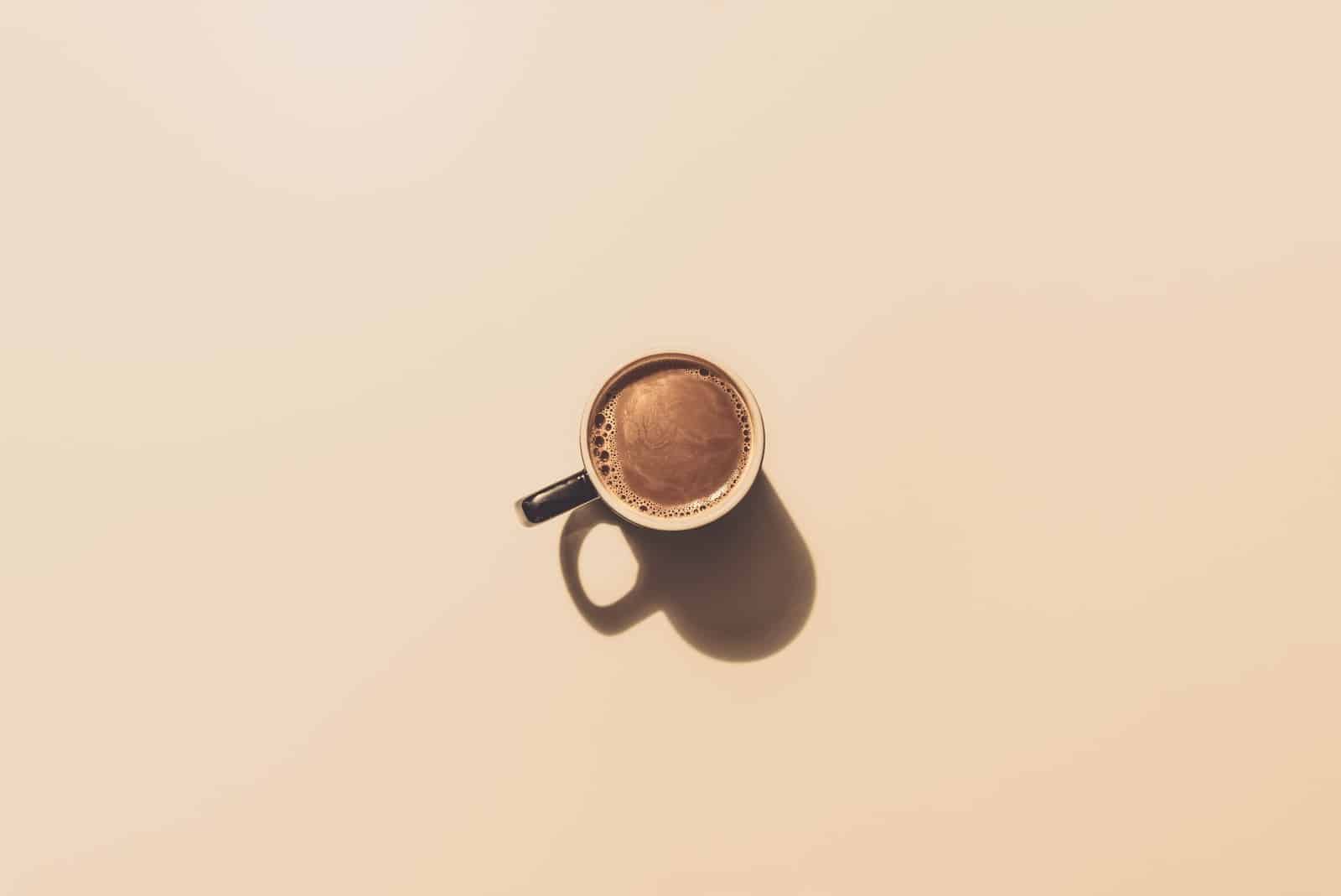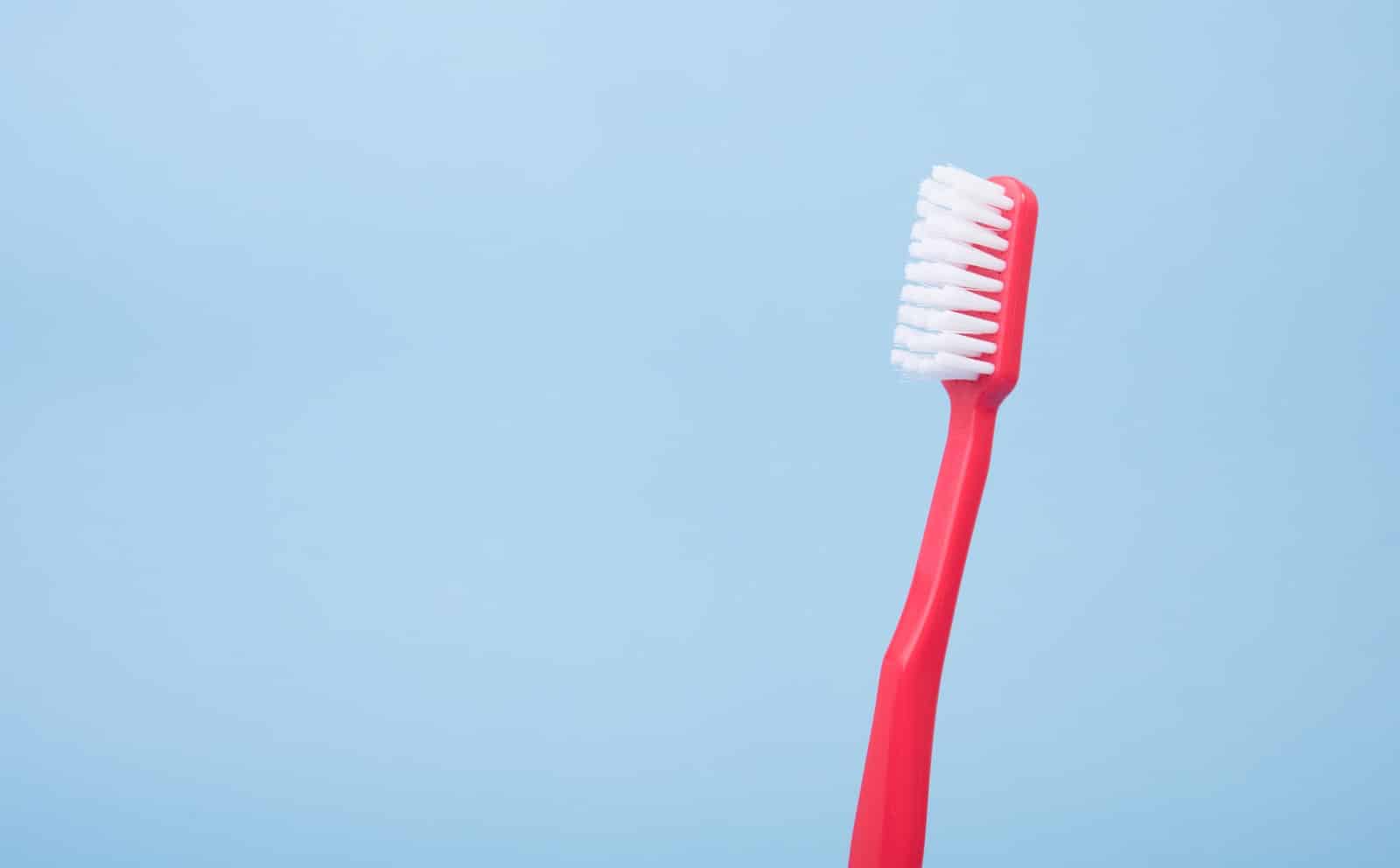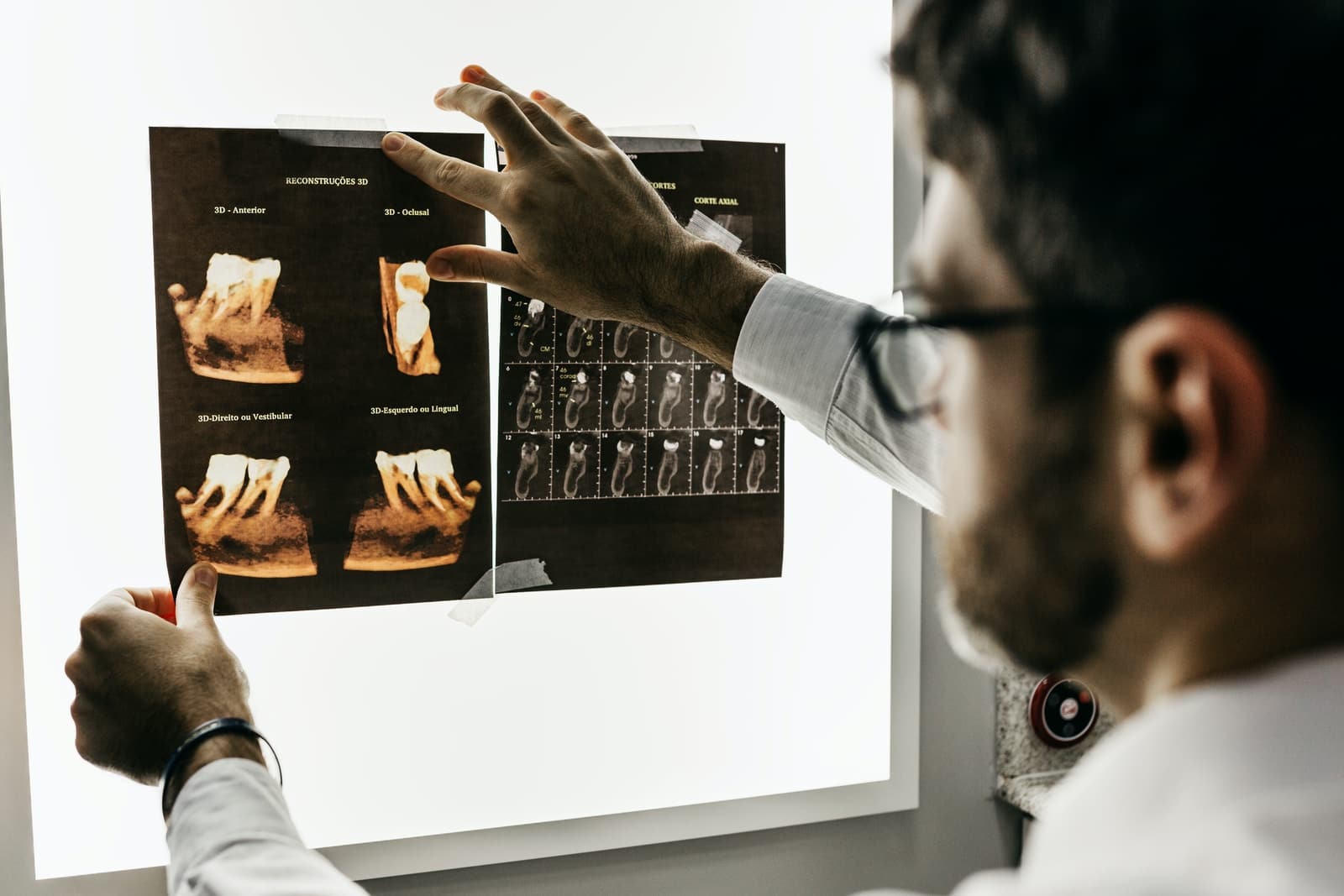I have yellow teeth, so this is a sensitive subject to write about.
Table Of Contents
−- Why does coffee stain teeth?
- How do you stop coffee from staining your teeth?
- The aternatives
It’s hard to smile, and every smile you do show, you will always close your lips and hope people won’t notice it.

If you’re like me and like many coffee drinkers who depend on coffee to get them through the day. You may have become aware of the cost your teeth that you have paid to enjoy your cup of joe over time.
Your teeth lose their natural whiteness as a result of stains.
However, there are many methods for removing coffee stains from your teeth.
But first,
Why does coffee stain teeth?

Enamel, the strong outer coating that covers the other layers of the teeth, has microscopic holes in it. When food and drink particles get lodged in those cracks, they form an extrinsic mark, which simply means that the outer layer of your tooth has become discolored.
However, when the particles remain in the cracks for an extended period of time, they begin to damage other layers of the tooth.
The stain gets darker and deeper the more you drink coffee and don’t do anything to clear it.
This is known as an intrinsic stain, and it is much more difficult to remove.
Here are some ways you might be staining your teeth without even realizing it, and not just with coffee.
- Nature’s natural sweets, especially dark ones like blueberries, blackberries, and pomegranates, can taste delicious and be good for you, but they can have a negative impact on the brightness of your tooth enamel.
- Mouth rinses and washes containing chlorhexidine and cetylpyridinium chloride are also popular teeth-staining culprits, so read the labels or consult your dentist for the best advice.
- Curry imparts the distinctive flavors of Indian and Thai cuisines, but it is also known to darken the color of teeth.
- Any naturally dark liquid, especially strong or acidic ones like balsamic vinegar, may cause staining if the teeth are not properly brushed afterwards.
- If it stains a white shirt, it will stain the teeth, according to the rules.
- Genetics and age, also plays a role.
- Excessive fluoride consumption, so check your drinking water!
How do you stop coffee from staining your teeth?

Brush your teeth!
Plaque deposition is the main cause of a tooth stain, so brushing your teeth with whitening toothpaste and visiting the dentist for frequent cleanings are the perfect ways to avoid unsightly coffee stains.
Here are a few rules on how you should be brushing your teeth:
- Recommend amount of time is 2 minutes: The American Dental Association recommends brushing for two minutes
- Don’t brush too hard: When you rub hard against your teeth and gums, you get a relaxing feeling that you’re actually cleaning your teeth. However, it does not clean the teeth and may be harmful. The aim of brushing is to remove plaque, which is a bacterial film that is sticky but smooth, so you don’t have to go to town on your teeth to remove it. Pushing too hard will overstress the gum tissue and cause it to recede, revealing part of the tooth’s root. That area may become susceptible to hot and cold temperatures. The root is often more prone to cavities than the tooth’s strong enamel.
- Brushing angles: Brushing your pearly whites straight across like you’re playing the violin isn’t the right way to do it. Hold the toothbrush at a 45-degree angle—upward for top teeth and downward for bottom teeth—so the bristles can sweep and clean under the gum line, where plaque can hide. Brush your teeth gently in little circles, as if you were drawing tiny “O’s” on them. The only exception is if you have an electric sonic toothbrush, which does not require you to angle the brush to 45 degrees.
- Type of bristles: Most dentists do not recommend firm or medium bristles, because the bristles are just too sharp for your teeth and gums. Instead, opt for soft or ultra-soft bristles that can reach deep under the gum line.
- Size of your toothbrush: Your toothbrush should be comfortable in your mouth, and in most situations, smaller is better. Unless you have a big mouth, small brush heads are best for getting to those hard-to-reach and difficult-to-see molars.
- Replacing your toothbrush: Bristles become splayed out, twisted, and curved over time, so that when you tilt your brush to 45 degrees, it no longer points in the right direction. The bristles become even weaker and lose their effectiveness. Treat yourself to a new toothbrush every three months.
- How many times should you brush in a day?: Brushing twice a day with fluoride toothpaste and flossing once a day, along with routine check-ups with your dentist, will prevent 98% of all dental disease. In addition, a study published in the journal Hypertension discovered a correlation between poor oral hygiene (people who rarely/never brush their teeth) and an increased risk of developing heart disease.
Apart from brushing your teeth regularly, which might not be working as you wanted, there are other ways to remove coffee stains from your teeth.
Flossing is mandatory
It is difficult to floss as much as dentists recommend. Setting aside a few minutes per day to floss, on the other hand, may have a significant effect on your oral health. It removes plaque in general, and plaque absorbs stains. Brushing your teeth alone will not kill any of the bacteria in your mouth. Whatever remains can harden and form tartar, which can cause infections.
Don’t sip, use a straw
When you drink through a straw, less liquid comes into contact with your teeth. As a result, the coffee has less chances of staining the teeth. The use of a straw is more natural for iced coffee drinkers, but it also works for hot coffee.
Add milk to your coffee
A splash of milk will make a significant difference in the health of your teeth. According to a study published in the International Journal of Dental Hygiene, casein, the key protein contained in milk, can bind to tannins in tea (bitter-tasting particles that leave residue on teeth) and avoid staining. Coffee contains small quantities of tannins, so coffee drinkers can benefit from these dairy benefits as well. Use animal milk for the best results; soy milk will not suffice.
Drink plenty of water
A swig of water will easily wash away staining liquids until they set into your teeth. Furthermore, drinking enough water is a perfect way to stay hydrated during the day.
Drink coffee, faster
Same logic as using the straw, the less coffee that contacts your teeth, the better. You finish your cup of coffee in five minutes, but your coworker takes his time and finishes the same amount in two hours. Your teeth would be the least dirty. Your coworker’s teeth would be more rusty because he was exposed to the coffee for a longer period of time.
Chew some gum (sugar-free)
Conquer coffee breath while still cleaning the teeth. Chewing gum increases the amount of saliva in your mouth, and saliva cleans the teeth of acids and plaque. Chewing sugarless gum for 20 minutes after eating will help avoid tooth decay, according to the American Dental Association.
Use hydrogen peroxide and baking soda
As an oxidizer, hydrogen peroxide activates the enamel to release the coffee particles that trigger tooth stains. Baking soda, on the other hand, speeds up the reaction. In a clean, empty bottle, combine a few drops of hydrogen peroxide. Then whisk in the baking soda until you have a paste.
Apply the paste to your teeth and keep it on for 15-20 minutes before brushing with your usual toothpaste. The effects may not be visible right away, but you can notice a difference after around 2-3 weeks.
Here are a few natural remedies you can try

Apple cider vinegar
According to a study, apple vinegar has a bleaching impact on cow teeth.
- To whiten teeth, use very small quantities of apple cider vinegar.
- Mix 2 teaspoons apple cider vinegar with 6 ounces of water to make mouthwash. For 30 seconds, swish the solution. Then, clean your mouth with water and brush your teeth.
It should be remembered, however, that it has the ability to harm the hardness and surface structure of teeth. So, use it with care and only for short periods of time. More human research is required to build on these results.
Use fruits and vegetables
According to a study, vitamin C deficiency can worsen the severity of periodontitis.
Although the study did not investigate the whitening effect of vitamin C on teeth, it did find a correlation between high plasma vitamin C levels and healthy teeth. According to the findings, high levels of vitamin C will minimize the amount of plaque that causes teeth to yellow.
According to a study, a toothpaste containing papain and bromelain extract effectively removed stains. Papaya contains the enzyme papain. Bromelain is an enzyme that is found in pineapple.
According to research investigated the effectiveness of a toothpaste containing 5% d-limonene in eliminating smoking and tea-related teeth stains.
The compounds d-limonene and/or citric acid, can be found in citrus fruit peels, can help whiten your teeth.
Researchers also investigated the ability of citric acid extracts from four different forms of orange peel as a teeth whitener. They were found to have varying levels of ability to whiten teeth, with tangerine peel extract producing the best results.
Nonetheless, Your enamel can be eroded and worn away by the acid. Please discontinue use of this procedure if you find your teeth being more responsive.
Coconut oil?
There have been no clear studies that support oil pulling’s teeth whitening effect.
However, a study discovered that oil pulling with sesame oil and sunflower oil decreased plaque-induced gingivitis. Since plaque buildup may cause teeth to yellow, oil pulling can help to whiten them.
Coconut oil pulling is said to help whiten teeth by removing plaque and bacteria from the mouth. Always look for a high-quality, organic oil that is free of harmful additives, which you can buy online.
For 10 to 30 minutes, swish 1 to 2 teaspoons of liquid coconut oil in your mouth. Allow the oil to not hit the back of your throat. The oil contains toxins and bacteria from your mouth, so do not swallow it.
Since it could clog drains, spit it into the toilet or a wastepaper bin. After rinsing your mouth with water, drink a single glass of water. After that, brush your teeth.
[amazon bestseller=”coconut oil” items=”3″ template=”table”]
Activated charcoal
To remove stains from your teeth, use activated charcoal. Since charcoal is highly absorbent, it is thought to be capable of removing pigments and stains from your teeth. It is also said to remove bacteria and toxins from the mouth.
According to one study published, charcoal toothpaste can whiten teeth within 4 weeks of use, but it is not as successful as other whitening toothpastes.
[amazon bestseller=”activated charcoal teeth” items=”3″ template=”table”]
The aternatives

Get professional care
Visit your dentist for a professional cleaning to reclaim the whiteness of your teeth and the secret smile. On occasion, polishing should be needed to remove stains from the top layer of your teeth.
Bleaching, a skilled tooth whitening procedure, is another alternative. The color of your teeth will lighten as a result of this procedure. Continue to use whitening toothpaste to prevent the teeth from staining after the procedure. Furthermore, brush your teeth at least twice a day.
Teeth-whitening kit
You should speak to your dentist about getting a whitening kit that you can use at home. The majority of these approaches make use of a hydrogen peroxide solution. This means you must be cautious and adhere to the directions to the best of your ability. There are two forms of kits available for purchase: Teeth-whitening strips or liquid packets
liquid packs: There are two, one for the upper set of teeth and one for the lower set. All you have to do is apply the solution to the given guards. Syringes are included in the kit for this reason. Then, as instructed, place the guard over your teeth and leave it there. After that, all you have to do is rinse and brush your teeth as normal.
[amazon bestseller=”teeth whitening kit” items=”3″ template=”table”]
Strips for teeth whitening: If you plan to use the strips, the first move is to apply the solution to your teeth. Instead of the guard that was used with the gel packs, you can use the strips. Leave the teeth-whitening strips on for the period specified in the instructions. Then, clean your mouth and brush your teeth.
[amazon bestseller=”teeth whitening strips” items=”3″ template=”table”]
When you have some free time, it is important that you use teeth-whitening kits. Failure to follow these instructions can result in enamel damage. Since these kits contain hydrogen peroxide, repeated use can cause tooth and gum damage.
Conclusion
I hope these preventive measures can help you avoid any coffee stains, but also, for those who do have coffee stains on your teeth, you should still practice these tips! We offered both preventive and removal tips today.
But as always, visit your dentist!
FAQs
Will my teeth get whiter if I stop drinking coffee?
Is it better to drink coffee before or after you brush your teeth?
Disclaimer: This post contains affiliate links, which means I may receive a small commission, at no extra cost to you, if you make a purchase using these links. Remember to support us by purchasing through the Amazon/Walmart/Impact Radius links provided. Last update on 2024-04-25 / Affiliate links / Images from Amazon Product Advertising API
Disclosure: No compensation or free products were received in exchange for writing this review.

Editorial Staff
The editorial staff at Crazy Coffee Crave is a team of coffee enthusiasts & Baristas who enjoy the one thing we all think about as soon as we get up in the morning. Trusted by thousands of readers worldwide.





